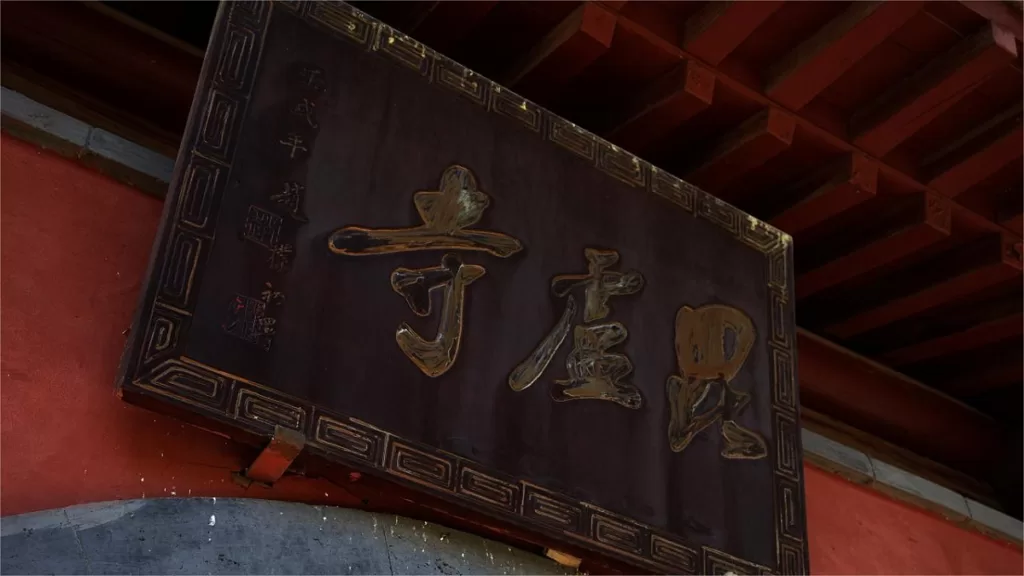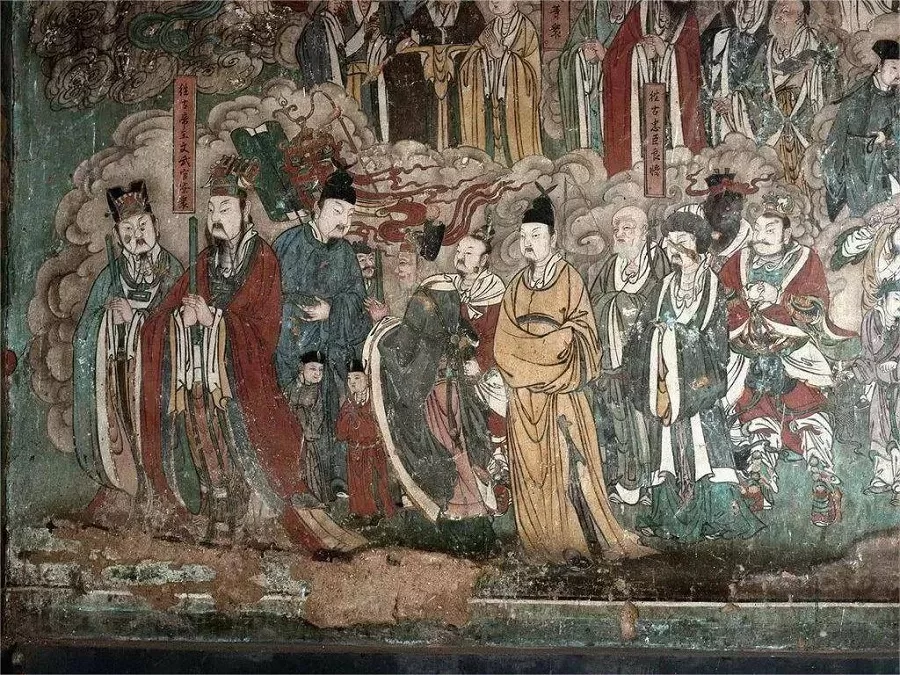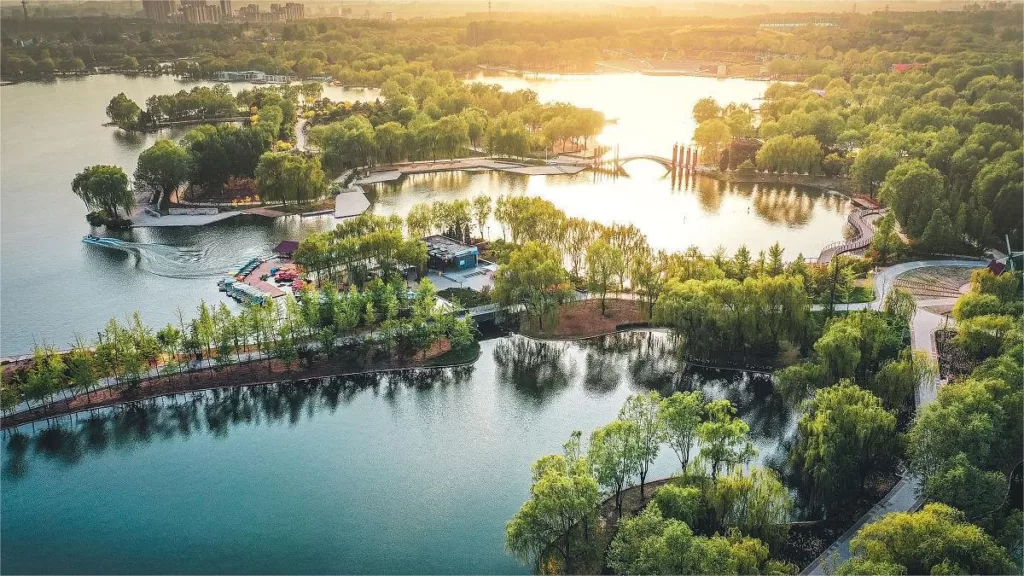石家庄毗卢寺 - 门票价格、开放时间、位置和亮点


Pilu Temple (毗卢寺), located in Shijiazhuang, China, has a rich history dating back to the Tang Dynasty during the Tianbao era (742-755 AD). Over the centuries, it underwent numerous renovations under the Song, Jin, Yuan, Ming, and Qing dynasties. However, its most significant restoration occurred between 1495 and 1535 AD. The temple occupies an expansive area of 18,000 square meters, and it derives its name from the main hall, which venerates the Buddha Vairocana.
Pilu Temple is aligned north to south and features various structures, including the mountain gate, Sakyamuni Hall, bell tower, drum tower, and the Pilu Hall. While the Sakyamuni Hall and Pilu Hall date back to the Ming Dynasty, the other buildings were reconstructed in the 1980s.
One of the remarkable treasures of Pilu Temple is the preservation of over 200 square meters of Ming Dynasty murals, including a unique fusion of Confucianism, Buddhism, and Taoism in the Pilu Hall. These murals are celebrated as one of the “Four Great Ancient Chinese Murals.” Pilu Temple stands as a testament to the enduring spiritual and artistic heritage of the region.
目录
基本信息
| 预计游览时间 | 1 小时 |
| 票价 | 20 元 |
| 开放时间 | 9.00 – 16.30 |
| 电话号码 | 0086-0311-87775241 |
地点和交通
Pilu Temple is situated in the northwestern part of Shijiazhuang, about 11 kilometers from the city center, within the Xinhua District of 河北省, China. It is precisely located in the Shangjing Village, Dubei Subdistrict.
To get there, tourists can take bus No. 115, 322, or 327 and get off at Shangjing – Pilu Temple Stop (上京-毗卢寺站).
Highlights of Pilu Temple
Pilu Hall

Pilu Hall, the central sanctuary of Pilu Temple, dates back to the Ming Dynasty and is dedicated to the veneration of the Buddha Vairocana. Its majestic architecture features intricately decorated roof ridges adorned with mythical creatures. At the forefront of the hall, two ancient cypress trees, rooted in the Tang Dynasty, captivate visitors. These trees naturally extend their branches westward, symbolizing a welcoming gesture towards the Western Pure Land, where it is believed the Buddha resides. This symbolism adds a profound spiritual dimension to Pilu Hall, making it a cherished place of worship and reverence for those who visit the temple.
Ming Dynasty Murals

Spanning an area of approximately 200 square meters, the Ming Dynasty murals within Pilu Temple are a visual treasure divided into five distinct sections. These captivating artworks portray various facets of Buddhism, including the life and journey of Siddhartha Gautama towards enlightenment. They also feature elements of Chinese folklore, showcasing myths, legends, and depictions of revered figures like Buddhist deities and celestial beings. Additionally, the murals delve into historical narratives, highlighting prominent figures from the past. These vivid and culturally rich murals provide a glimpse into the spiritual, mythological, and historical dimensions that have shaped the temple’s legacy and cultural significance over the centuries.
Buddha Statues

In the Sakyamuni Hall of Pilu Temple, a magnificent Buddha altar takes center stage, featuring a remarkable 3.04-meter-tall Ming Dynasty sculpture of Sakyamuni Buddha in vibrant polychrome clay. Flanking the central Buddha, there are two reconstructed disciples, Kashyapa and Ananda, crafted in 1987.
Behind the Buddha shrine, an intricate tableau unfolds, with a towering Buddha radiance and the majestic Mount Sumeru. To the north of Mount Sumeru, intricate sculptures depict pavilions, towers, bridges, flowing streams, and guardian deities. At the center of this tableau, there are statues of the Three Great Bodhisattvas, originally from the Ming Dynasty: Avalokitesvara seated in the center, flanked by Manjushri and Samantabhadra. These Buddha statues and their surroundings create a spiritually rich and visually captivating focal point within the temple.
Vlog about Pilu Temple
从评论中总结出的有用提示
Optimal Visiting Time: Due to the lack of artificial lighting inside the mural hall, it is recommended to visit on sunny days for natural light. Upon entering the hall, start by viewing from well-lit areas to gradually adjust to the lighting conditions. Surprises await as darker areas reveal lifelike figures when eyes adjust to the lighting.
Preservation and Rules: Photography is prohibited inside the temple to protect artifacts. The use of mobile phone flashlights or any other lighting devices is also forbidden. Administrators are present on-site to monitor and enforce compliance.
Photo Opportunities: Behind the main hall of Pilu Temple, the west wall features several life-sized replicated portraits available for photography. Replicas of these images can also be found at the Shijiazhuang Museum.
Food and Water Considerations: There are limited dining options in the vicinity, so visitors are advised to bring their own food and water.
石家庄市中心附近的景点

Hebei Museum

宝都斋

石家庄动物园

石家庄植物园